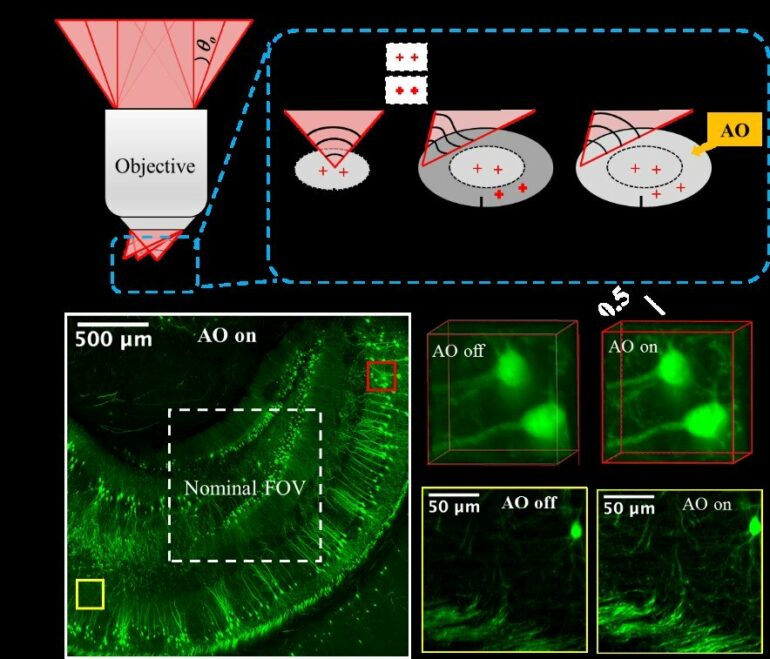Two-photon microscopy (TPM) enables the observation of cellular and subcellular dynamics and functions in deep nervous tissues, providing critical in situ and in vivo information for understanding neurological mechanisms.
However, conventional TPM retains cellular resolution imaging over only a restricted field-of-view (FOV), usually 0.5 × 0.5 mm2, depending on the optical system. FOV is usually determined by objectives.
A research team led by Prof. Zheng Wei from the Shenzhen Institute of Advanced Technology (SIAT) of the Chinese Academy of Sciences proposed a novel method to extend the FOV of objectives and achieve high-resolution and large-FOV two-photon imaging.
The study was published in Optics Letters on Feb. 14.
Although several TPM systems have been reported with custom design objectives to achieve large FOV with high-resolution imaging, these systems need sophisticated design and assembly of customized optical components, which limits their wide applications.
The nominal FOV of objectives reflects the maximum imaging area where the optical aberration is considerably corrected. The team found that the incident light still could reach the area outside the nominal FOV of objectives (the extended FOV). However, when the signals from the extended FOV were used for imaging, the images were extremely blurred and distorted.
To utilize this property of objectives, they proposed and implemented a segment-scanning sensorless adaptive optics method to correct the large aberrations and extend the FOV of commercial objectives.
“This method enabled an imaging FOV diameter up to 3.46 mm wide while maintaining a lateral resolution of ~840 nm by using a commercial objective with a nominal FOV diameter of 1.8 mm,” said Prof. Ye Shiwei, the co-first author of this study.
Using this method, the researchers clearly observed the cerebral nerve cells of Thy1-GFP-M mice brain slice, which revealed almost 1/4 of the entire mouse brain area. Additionally, in vivo imaging of the large-scale mouse cerebral microglia and vasculature were also presented.
“The proposed method is compatible with any scanning optical microscope and does not require sophisticated design or assembly of customized optical components. This work will help in exploring brain networks and neural phenomena,” said Prof. Zheng.
More information:
Jing Yao et al, Exploiting the potential of commercial objectives to extend the field of view of two-photon microscopy by adaptive optics, Optics Letters (2022). DOI: 10.1364/OL.450973
Provided by
Chinese Academy of Sciences
Citation:
Researchers develop large-field-of-view and high-resolution two-photon microscope (2022, February 23)



